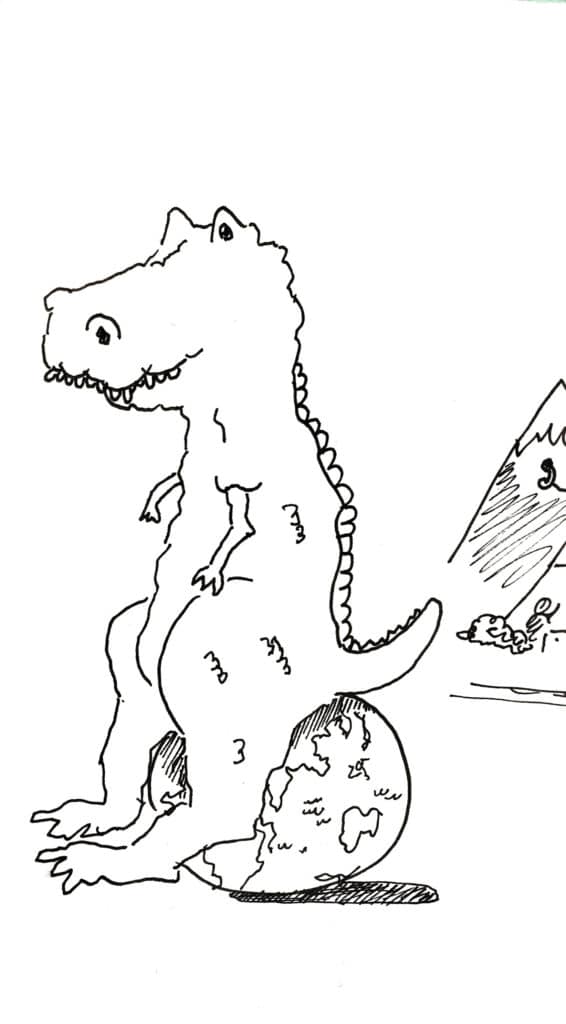Let’s get uncomfortable: making the most of uncertainty in design
It’s not easy to feel uneasy, but a little bit of constructive uncertainty can be good for your design process. Designer Lindsay Tingström has some tips on how to make the most of it when you’re not sure what to do next.
A while back, a colleague and I opened a talk by handing out post-its and instructing the audience to draw a diligord. We gave them 30 seconds. After a couple of seconds of confused, blinking stares, the room of designers got to work. Most figured that even if they were supposed to know what a diligord was (they weren’t; it’s a nonsense word), it couldn’t hurt to spend half a minute doodling a creative interpretation.
The point of the exercise was to set up our talk about uncertainty. The unknown unknowns in our world are everywhere: technological, environmental, personal, professional. Once we feel the uncertainty of a situation, it can be disconcerting, even paralysing, but we deal with uncertainty all the time, often without even realising it.
Get uncertain and stay there a while
It doesn’t matter what a ‘diligord’ is, but it does matter what actions we take in response to an unclear prompt like this.
For many of us, our impulse is to get to certainty as quickly as possible when we work. If you build the kind of structure that can keep anxiety at bay, you can stay in that messy, uncertain place a little longer, and build on the boundary-pushing, exploratory energy it creates.
Create a minimum viable structure
As a team, decide together what you need so you can stay loose and feel safe to explore. Sharing individual needs and outlining a common agreement on how you’ll work creates a frame that can also function as a safety net when you’re feeling unsure.
We have an internal toolkit, our method for giving voice to personal needs, setting team expectations, and co-creating our process for any given project. The method we use stays the same even though our day-to-day process might need to change between projects, or even over the course of one. Whether you use something like this, or you’ve got a great Agile coach, having something solid to count on helps us stay comfortably uncomfortable for a while longer.
- Acknowledge that uncertainty is hard, and that’s okay
A little validation can go a long way, especially if you get to talk about it out loud. We try to make it easy to talk about how hard it is to feel uncertain, within the team, and with the client.
We use something called the Stinky Fish, which helps us talk about concerns or fears we have around a project. Rather than hiding our stinky fish, which will only get more rotten the longer you ignore them, we include discussion about them in the kickoff for every project. It’s not about solving the ‘stink’, which often isn’t possible, but putting them on the table helps us find commonalities and build trust by validating each other. Five minutes of stinky fish can relieve the kind of unspoken pressure that can otherwise be a block to trusting a method or process.
Make the project plan visual and visible, then update as needed
Iterating on small things seems obvious, but sometimes those small changes lead you to a pretty big pivot, and you can’t always be sure where that will go. To stay grounded and together, we map out as much of the plan as we can — deadlines, hard deliverables, even the spots we know will be tricky ones — and then we put it somewhere all the stakeholders can easily access it, preferably with a physical version, too. We make a visual plan, and treat it as a living document, revisiting it weekly and updating it as needed. Ongoing communication and adaption helps us stay grounded during continuous change, and also reminds us of our progress when we feel like we’re not moving forward.
Set an expiration date
Getting comfortable with uncertainty is valuable, but you can end up too cosy with the exploration and experimentation, so it’s important to set a date to move from ‘diverging’ and back to ‘converging’. An exploration-expiration date is a smart, hard deadline, and will help the team understand the different project phases. When uncertainty has a hard stop, it’s easier to use it productively, and move from ambiguity toward conclusions. We use a calendar with a deadline clearly marked on it, or, for shorter tasks, a visible timer.
Use your intuition
Your gut feeling isn’t just some made-up fantasy–what your gut tells you is based on your past experience and learning. There’s often an assumption that quantitative data is stripped of emotion and therefore somehow better for informing decisions, but it’s not necessarily true. And even if it were true, emotions aren’t bad things.
We’re humans, designing for other humans, which means that intuition, instinct, and qualitative insights get to matter, too, even if you can’t always prove you’re right in any external way. If you go with your gut and you turn out to be wrong, that failure will help you get a deeper, experience-led understanding early in a process. In other words, you’ll get hard data.

Forty diligords can’t be wrong
We like to think of uncertainty as a catalyst in design process. If you’re not ready to invite it into a project, you can dip your toes in with a short exercise, just like we did with the ‘diligord’, which we got from this Nonsense Word Generator. If you can harness the potential of uncertainty by managing it, it becomes less uncomfortable for everyone involved. When you can do that, it’s not stress-inducing or paralyzing. It becomes proof that you’re digging in an area that needs digging in, and it is simply a signal that there is work to be done.